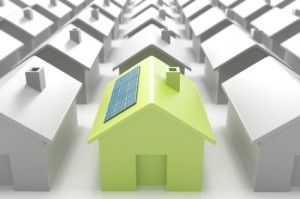 Fine Line Homes’ green materials and construction practices are good for both you and the environment. Consider a few of the benefits:
Fine Line Homes’ green materials and construction practices are good for both you and the environment. Consider a few of the benefits:
- Reduced consumption of natural resources
- Lower utility costs
- Greater self-sufficiency and less dependency
- Lower maintenance costs over the life of the home
- Enhanced indoor environment quality and increased comfort
- Cost-effective material recovery through recycling and reusing
- Use of products and services from local businesses, minimizing the cost and impact of obtaining materials from distant regions
So does building green cost more money? Sometimes it does, but in most cases, there is an economic tradeoff. For example, a high-performance home may cost you $100 more a month in mortgage payments but save more than a $100 a month on your utility bills.
But it’s important not to get caught in the “payoff” game, where every choice must have a financial benefit. These materials and practices often have other benefits to keep in mind: a healthier, more comfortable environment, lower maintenance needs, better performance, and a superior look and style.
Let’s compare conventional vs. sustainable building practices in several areas of the construction process.







